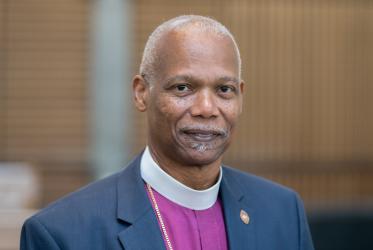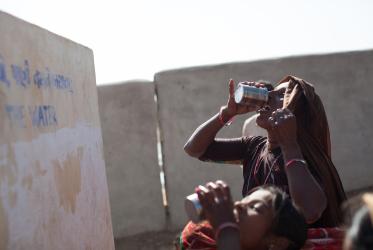Text:
Luke 15:1-31 (The parables of the lost sheep, lost coin and the prodigal son)
Luke 16:19-31 (The parable of the rich man and Lazarus)
Luke 13:30 (The last will be the first)
Reflection
In 2015, when the 15-year timeframe of the Millennium Development Goals ended, world leaders came together and signed on to a new mechanism to end poverty, reduce inequality and tackle climate change by 2030. This mechanism is known as the Sustainable Development Goals, which include 17 global goals.
Many of us from the civil society were unhappy at the impact of the Millennium Development Goals, which aimed at cutting poverty, poor health, lack of education, and environmental challenges in half by 2015. What was lacking in those goals was an inclusive approach which would address the most vulnerable communities of the world. However, with the Sustainable Development Goals, we have the potential to learn from past mistakes. At the heart of the goals is a commitment to ensure that ‘no one is left behind’ and that no goal is considered met unless it is met for all. That’s because, although we have witnessed huge progress in the fight against poverty and injustice, too many people – the most impoverished, those that are excluded, disadvantaged and at risk of violence and discrimination – still face terrible inequalities when it comes to accessing resources and rights. The world must focus on reaching these groups and ensuring they can make their voices heard if we are to achieve a better world for all.[1]
One of the 17 goals is dedicated to water and sanitation. Goal 6 says: “…ensuring availability and sustainable management of water and sanitation for all”. Michael Møller, United Nations under-secretary-general and director-general of the United Nations Office at Geneva, at the 1st World Summit on Leaving No One Behind, said that goal 6 “is pivotal for the success of the entire 2030 Agenda and all of the other 16 goals.
̶ Take zero hunger - unimaginable without sufficient water to ensure food security.
̶ Consider health - inconceivable without safe, available and affordable sanitation.
̶ Look at economic growth - unreachable in conditions of water scarcity.
The list goes on, but the point is clear.”
Today, when more than 2 billion people lack access to safe, clean drinking water, and more than 4.5 billion people lack adequate sanitation services, one can only imagine how these large numbers of people can access other rights and provisions of life such as good health, education, and dignified jobs. Therefore, it is imperative for the government leaders and civil society organisations to invest in goal 6 as a catalyst to influence most other goals in a positive manner.
The United Nations World Water Development Report 2019, with the theme “leaving no one behind,” was released around World Water Day, 22 March this year. The United Nations water chair, Gilbert F. Houngbo, in his foreword to the report says, “The numbers speak for themselves…if the degradation of the natural environment and the unsustainable pressure on global water resources continue at current rates, 45% of global Gross Domestic Product and 40% of global grain production will be at risk by 2050. Poor and marginalized populations will be disproportionately affected, further exacerbating already rising inequalities.”
Prof. Stefan Uhlenbrook, United Nations Educational, Scientific and Cultural Organization World Water Assessment coordinator, who produces the report, says, “It (the report) provides insights and guidance in helping identify ‘who’ is being left behind, and describes how existing frameworks and mandates…can help ‘reach the furthest first’, through improved water management.”
Now let us examine, what does the Bible say about leaving no one behind? The Bible has a positive bias towards poor, vulnerable and marginalised communities. In the Old Testament, we see several prophets have come forward defending the rights of the poor and vulnerable. In the New Testament, it becomes more implicit, the way Luke writes the gospel. The preferential option of Jesus Christ for “the lost, the last and the least” becomes much clearer.
In chapter 15, Luke talks about the parable of Jesus and the lost sheep, the lost coin and the prodigal son, representing the “lost” sections of our society. In chapter 13 he talks about the last becoming the first. In the real world, which has a cutthroat competition for survival, this is very difficult to imagine. Can you imagine the student who scored the lowest mark will be announced as the topper of the university? Certainly not! But through Luke's gospel, Jesus is challenging us to ensure that the least and the last are made worthy by our collective efforts to be given the preferential option in their favour.
Furthermore, in chapter 16 Luke talks about Lazarus, a beggar, representing “the least” of the society, and how he was treated by the rich (and probably many others in that locality). But eventually, the poor beggar - not the rich man - received grace in the sight of God. In all these parables and expressions, Luke makes it clear that Jesus came to this world to speak out for and defend the rights of the lost, the last and the least. As followers of Christ, therefore, it is our call to have this positive bias towards the poor and the “have nots,” as Jesus would do that too. May these teachings from the Bible inspire us to reconstruct the norms of this world, which is based on the theory of “survival of the fittest”! May this challenge us to reach out for “the lost, the last and the least” in our personal as well as professional endeavours.
Questions for discussion:
- What inspiration can we draw from the gospel of Luke when we engage ourselves to address the Sustainable Development Goals, particularly the goal related to water and sanitation for all?
- As it is our Christian and moral imperative to work for the betterment of the marginalised and vulnerable communities, how can we translate the inspiration and teachings of Christ to the notion of “leaving no one behind” while working on the goals?
- Do you agree that goal 6 is a cross-cutting goal for many other goals?
Resources:
- SDG Leave no one behind toolkit (English)
- Leave no one behind: Insights from CSOs around the world
- UN World Water Development Report 2019 (English)
[1] https://action4sd.org/wp-content/uploads/2016/11/Leave_No_One_Behind_Toolkit_EN.pdf




